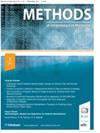使用自然语言处理(NLP)验证放射学报告中肺炎遭遇的方法学方法。
IF 1.8
4区 医学
Q3 COMPUTER SCIENCE, INFORMATION SYSTEMS
引用次数: 2
摘要
肺炎是由在肺部建立感染过程的微生物引起的。肺炎诊断的金标准是放射科医生在放射学记录中记录的肺炎相关特征,这些特征以非结构化格式在电子健康记录中捕获。研究目的是开发一种方法学方法来评估肺炎诊断的有效性,该方法基于确定放射学报告中关键放射学特征的存在或缺失,随后将诊断决策呈现为结构化格式。方法在开发肺炎特征特异性词典后,战略性地开发了一个肺炎特异性自然语言处理(NLP)管道,应用ctake来验证肺炎诊断。通过NLP管道对国际疾病分类(ICD)代码识别的符合研究条件的受试者的放射学报告进行解析。制定了分类规则,根据支持或反驳诊断代码的标记概念,将每次肺炎发作分为三类:“阳性”、“阴性”或“未分类:需要人工审查”。结果回顾性检索65,904例确诊的91,998次肺炎发作。大约89%(81707 / 91998)的肺炎发作记录在225893份胸片报告中。NLP将33%(26,800/81,707)的肺炎事件分类为“肺炎阳性”,19%(15401/81,707)为“肺炎阴性”,48%(39,209/81,707)为“有待进一步人工审查的事件分类”。NLP管道性能指标包括准确性(76.3%)、灵敏度(88%)和特异性(75%)。结论与迄今为止开发的其他肺炎特异性NLP系统相比,该肺炎特异性NLP管道具有良好的性能。本文章由计算机程序翻译,如有差异,请以英文原文为准。
A methodological approach to validate pneumonia encounters from radiology reports using Natural Language Processing (NLP).
INTRODUCTION
Pneumonia is caused by microbes that establish an infectious process in the lungs. The gold standard for pneumonia diagnosis is radiologist-documented pneumonia-related features in radiology notes that are captured in electronic health records in an unstructured format.
OBJECTIVE
The study objective was to develop a methodological approach for assessing validity of a pneumonia diagnosis based on identifying presence or absence of key radiographic features in radiology reports with subsequent rendering of diagnostic decisions into a structured format.
METHODS
A pneumonia-specific Natural Language Processing (NLP) pipeline was strategically developed applying cTAKES to validate pneumonia diagnoses following development of a pneumonia feature-specific lexicon. Radiographic reports of study-eligible subjects identified by International Classification of Diseases (ICD) codes were parsed through the NLP pipeline. Classification rules were developed to assign each pneumonia episode into one of three categories: "positive", "negative" or "not classified: requires manual review" based on tagged concepts that support or refute diagnostic codes.
RESULTS
A total of 91,998 pneumonia episodes diagnosed in 65,904 patients were retrieved retrospectively. Approximately 89% (81,707/91,998) of the total pneumonia episodes were documented by 225,893 chest x-ray reports. NLP classified and validated 33% (26,800/81,707) of pneumonia episodes classified as 'Pneumonia-positive', 19% as (15401/81,707) as 'Pneumonia-negative' and 48% (39,209/81,707) as ''episode classification pending further manual review'. NLP pipeline performance metrics included accuracy (76.3%), sensitivity (88%), and specificity (75%).
CONCLUSION
The pneumonia-specific NLP pipeline exhibited good performance comparable to other pneumonia-specific NLP systems developed to date.
求助全文
通过发布文献求助,成功后即可免费获取论文全文。
去求助
来源期刊

Methods of Information in Medicine
医学-计算机:信息系统
CiteScore
3.70
自引率
11.80%
发文量
33
审稿时长
6-12 weeks
期刊介绍:
Good medicine and good healthcare demand good information. Since the journal''s founding in 1962, Methods of Information in Medicine has stressed the methodology and scientific fundamentals of organizing, representing and analyzing data, information and knowledge in biomedicine and health care. Covering publications in the fields of biomedical and health informatics, medical biometry, and epidemiology, the journal publishes original papers, reviews, reports, opinion papers, editorials, and letters to the editor. From time to time, the journal publishes articles on particular focus themes as part of a journal''s issue.
 求助内容:
求助内容: 应助结果提醒方式:
应助结果提醒方式:


